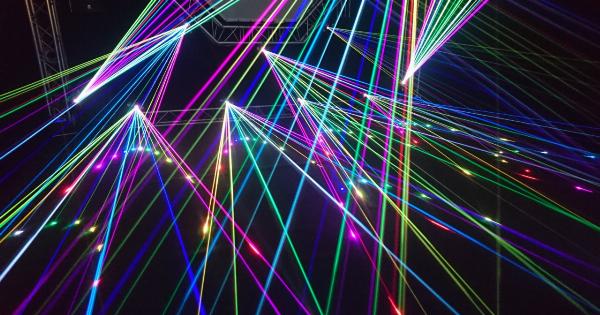Myopia, or nearsightedness, is a common refractive error that affects millions of people worldwide. It occurs when the shape of the eye causes light rays to focus in front of the retina, making distant objects appear blurry.
While glasses and contact lenses provide effective correction for myopia, laser treatment is becoming an increasingly popular option for those seeking a more permanent solution. In this article, we will discuss the benefits of laser treatment for myopia correction and explore options for insurance coverage.
What is laser treatment for myopia correction?
Laser treatment for myopia correction, also known as LASIK (Laser-Assisted In Situ Keratomileusis), is a surgical procedure that uses a laser to reshape the cornea. This allows light to be focused correctly on the retina, improving vision.
LASIK is a quick and relatively painless procedure that can be performed in as little as 15 minutes per eye.
Benefits of laser treatment for myopia correction
There are many benefits to undergoing laser treatment for myopia correction, including:.
- Permanent correction of myopia
- Quick and relatively painless procedure
- Reduced dependence on glasses and contact lenses
- Improved visual acuity
- Reduced risk of complications associated with contact lens wear
Candidates for laser treatment for myopia correction
Not all individuals with myopia are candidates for laser treatment. Factors that can determine whether an individual is a good candidate for LASIK include:.
- Age – LASIK is generally not recommended for those under the age of 18, as their vision may still be changing.
- Stable vision – Individuals should have had stable vision for at least a year before undergoing LASIK.
- Corneal thickness – LASIK requires a certain level of corneal thickness, so individuals with thin corneas may not be good candidates.
- Overall eye health – Individuals should have good eye health and no underlying eye conditions.
Insurance coverage for laser treatment for myopia correction
Many insurance plans do not provide coverage for laser treatment for myopia correction. However, some plans may cover part or all of the cost of the procedure.
It is important to check with your insurance provider to see if LASIK is covered under your plan. Your insurance provider may also require pre-authorization or a referral from your primary care physician before approving the procedure.
Cost of laser treatment for myopia correction
The cost of laser treatment for myopia correction can vary depending on a number of factors, including the severity of the myopia, the type of LASIK procedure performed, and the location of the clinic.
On average, the cost can range from $1,500 to $3,000 per eye. It is important to research and compare different clinics to find the best option for your needs and budget.
Risks and complications of laser treatment for myopia correction
As with any surgical procedure, laser treatment for myopia correction comes with risks and potential complications. These can include:.
- Dry eyes
- Glare, halos, and double vision
- Infections
- Loss of vision
- Regression of correction
It is important to discuss these risks with your eye doctor and surgeon before undergoing LASIK.
Preparing for laser treatment for myopia correction
Prior to undergoing LASIK, your eye doctor will perform a thorough eye exam to determine your candidacy for the procedure. You will be asked to discontinue contact lens wear for a certain amount of time prior to the exam and procedure.
Your surgeon will provide detailed instructions on how to prepare for the procedure, which may include avoiding certain medications and arranging for transportation to and from the clinic on the day of the procedure.
The LASIK procedure
The LASIK procedure typically takes less than 30 minutes per eye. You will be given numbing drops to ensure the procedure is painless.
During the procedure, your surgeon will create a thin flap in the outer layer of the cornea using a microkeratome or femtosecond laser. The flap is then folded back to expose the cornea, and a laser is used to reshape the cornea to correct the refractive error. The flap is then repositioned, and the procedure is complete.
Recovery from laser treatment for myopia correction
After the LASIK procedure, you will be given antibiotic and anti-inflammatory eye drops to prevent infection and reduce inflammation. Eye shields may also be provided to prevent accidental rubbing or pressure on the eyes.
Most individuals are able to return to work and normal activities within a few days, although some may experience blurry vision and discomfort for several days or weeks after the procedure. It is important to follow your surgeon’s instructions on post-operative care to ensure a smooth and successful recovery.
Conclusion
Laser treatment for myopia correction can provide a permanent solution to myopia, reducing dependence on glasses and contact lenses and improving visual acuity.
While insurance coverage for LASIK may be limited, the benefits of the procedure may outweigh the costs for some individuals. It is important to discuss all options with your eye doctor and surgeon to determine the best course of action for your individual needs and circumstances.





























